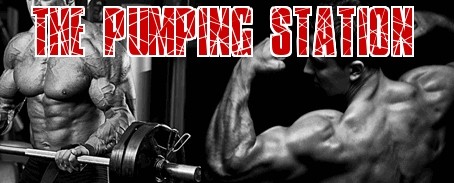How to Build Explosive Muscle
By Mike Falcon
The foundation for every bodybuilder, the motivation for every kid who got sand kicked in his face, and the jaw-dropping reaction of your folks back in Audubon, Iowa, who haven't seen you since you started hitting the heavy iron are all based on the same single word: Mass. Without size, you're merely another geek who goes to the gym. With muscular mass, you're on your way to becoming a bodybuilder.
You'll find a common thread in mass-building advice. While there is always someone with a new idea or theory, these are the truths that most authorities agree will combine to make you as big as a house and reasonably strong, to boot.
Remember that almost any workout will increase size and strength markedly in the first year of training. That's why famed strength-trainer Charles Poliquin says you can pretty much toss out training comparisons that use untrained or first-year lifters.
But these techniques work well for the intermediate and advanced lifter and also serve to maximize the incredible growth people in their late teens through late 20s can expect in their first year. If you are someone with less than 4-6 months of initial training, wait a while: your muscles, connective tissue, and bones all need time to make early adaptations before you can subject them to mass-building exercises.
After warming up the body part with a couple of sets using light weight, go for sets of between 6-8 reps, say most experts. The best variation we've seen is one used by two of the most massive guys to walk through our doors, Dan Judge (Witness with Weights, issue #11) and Dave Nelson (Big Shoulders with Big Dave Nelson, issue #14, also available online). Both men use two working sets of between 4-8 reps for mass building, usually going through four exercises for a total of eight sets per body part. Example: two sets of bench press, two sets of incline presses, two sets of dumbbell flys, and two sets of decline presses for a chest routine.
The weight used in those sets is determined by the number of repetitions you can do before the muscle fails to complete another repetition. It is NOT determined by the amount of discomfort you feel. Building big mass is painful, hard work. Get used to it, or get used to being mid-sized.
After you have completed your last rep because of muscular failure, pause two seconds and do two more "forced" reps. Another variation is to have a spotter help you lift or to change the pin setting to a lighter setting on a machine during that very brief break. Many experts like to emphasize slow negative repetitions. If you're doing a curl, the positive (concentric) portion of the exercise is when you pull the bar up to your chest. The negative (eccentric) movement is as you slowly let it down. Your spotter does most of the work, helping pull the weight up for you before you slowly let it return (one or more times) if you've worked to positive (concentric) failure. If you don't have a partner, you can lower the weight slowly during the set as a variation. Some movements, like dips and pull-ups, are easy to perform as negatives: just stand on a stool and lower yourself slowly.
Most, but not all, mass experts advise that you perform the positive concentric motion taking between one and two seconds, and doing eccentric negative in 2-4 seconds. Many experts like you to pause for a second at the contraction and squeeze.
Many bodybuilding magazines have had to mealy-mouth their way out of the long- standing advice from bodybuilding greats to lock out their elbows or knees. As Poliquin say's, all that does is create a series of one-rep sets (which are perfect for forced reps after the set is completed, however). Go as far as you can without locking out the elbow or knee joint to keep constant tension on the muscle.
Free weights recruit more muscle fiber, enhance and enlarge stabilizing muscles, and allow greater and more innovative movements and motion. However, nobody is going to minimize the benefits of a Smith machine, which lets you put on big poundage without having to worry about balance or spotters. Use both!
While protein builds muscles, it takes carbohydrates in the form of sugars to raise insulin levels needed for repair and pure calories for the huge energy expenditures. For an active person trying to put on mass, there are two essentials. First is a minimum of 1.2 grams of protein per pound of muscular body-weight per day. It's best to divide this over 5-6 meals. Also, within 20 minutes of finishing your workout, take a meal high in carbohydrates (70 or more, including some fast-burning simple sugars) and moderate in protein (at least 25 grams).
Many experts suggest training a body part just once a week. But muscles are usually fully recovered in 96 hours (four days). One interesting strategy used by the current Mr. California is to alternate a heavy routine with a light maintenance routine.
Stretch the muscle you're working between sets. This allows better circulation and nutrient absorption, and keeps the fascia-the muscle covering-flexible so that the muscle can more easily expand.
Muscles get used to performing set movements, so use variations of the same exercise to promote growth. After 4-6 weeks, switch from dumbbell presses to Arnold presses.
Cutting Edge Anabolic Supplements - Make Extreme Muscle Gains

Click Here to Sign Up for Your Free Bodybuilding Magazine Subscription